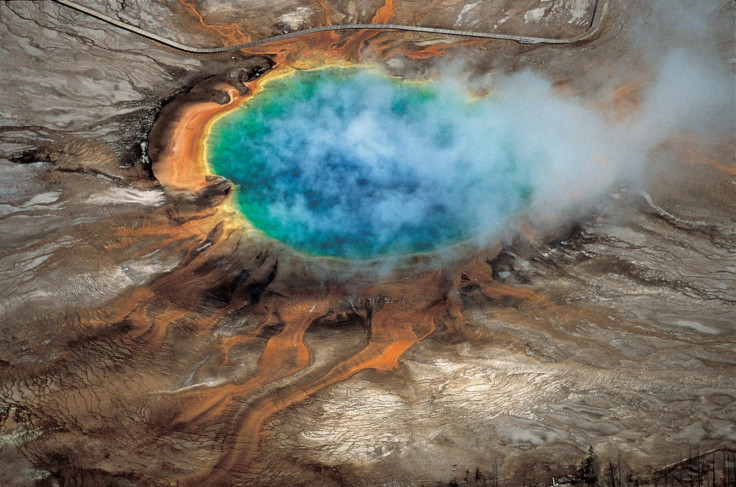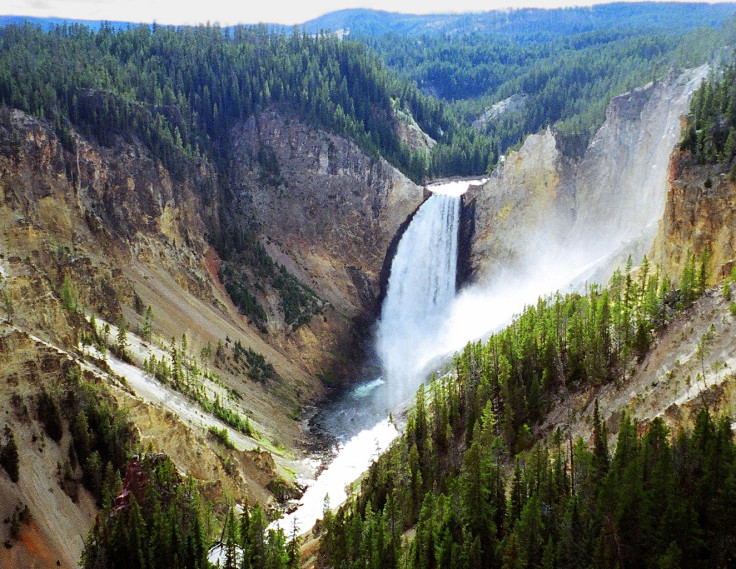Yellowstone supervolcano: Magma reservoir big enough to fill Grand Canyon 11 times discovered

Yellowstone supervolcano has a magma reservoir four times bigger than its chamber that we did not know about.
The massive reservoir sits below the magma chamber at a depth of between 12 and 28 miles. It has so much magma that it could fill the Grand Canyon 11.2 times. It is believed to be the biggest magma reservoir in the world with a volume of 46,000 km3.
Published in the journal Science researchers said the discovery does not alter the risk posed by Yellowstone supervolcano – currently the chance of a catastrophic eruption is about 700,000 in one – but it provides a better understanding of the mechanisms of the volcano and therefore the corresponding risk.
The information, first author Hsin-Hua Huang said, can be used by modellers to get a better idea of how it will erupt in the future. He told IBTimes UK: "The images give an idea of what it looks like, how big it is – this is probably doesn't change the assessment of hazard. But this type of estimate like size and geometry can help some models, so it can be a very important."
CO2 mysteries
Researchers have long suspected there was something deeper below the surface like this magma reservoir, as CO2 measurements at the surface did not line up with how much magma they knew about. However, this is the first time researchers have mapped the system.
They said: "Previously, some geochemistry studies measured the CO2 flux on the surface of Yellowstone and found the amount of CO2 flux is huge and they could not account for it. So many people already expected the existence of this one, but no one knew the size of it. So we didn't expect how big it was, we just knew it probably existed. But now we know how big it is. No one was talking about the size before.
"Our study actually is not really discovering anything knew, we really just unveiled its existence."

Extremely hot sponge
The molten rock in the newly discovered reservoir is more like a sponge – it is about 2% molten rock. In comparison, the upper magma chamber averages about 9%.
"We've got this very huge hot body, its partial molten so it's not really dangerous. It's just hot," Huang said.
In a statement, he added the findings provide the first good understanding of what the plumbing of Yellowstone look like: "We have imaged the continuous volcanic plumbing system under Yellowstone. That includes the upper crustal magma chamber we have seen previously plus a lower crustal magma reservoir that has never been imaged before and that connects the upper chamber to the Yellowstone hotspot plume below."
No increased risk of eruption
Yellowstone volcano is at no greater risk of erupting because of the massive magma reservoir discovery. The reservoir appears to feed the upper chamber.
"The magma chamber and reservoir are not getting any bigger than they have been, it's just that we can see them better now using new techniques," co-author Jamie Farrell said.
Previous eruptions – including those at two million, 1.2 million and 640,000 years ago – were all caused by the upper magma chamber. "It doesn't change the hazard assessments because the eruptions are mainly controlled by the upper one, not the deeper one – that should be regarded as the source feeding the upper one," Huang explained.

More to discover
The researchers say that while they have a better understanding of the inner workings of Yellowstone, they still do not have the full picture.
They said: "Are we satisfied with the result? Researchers are never satisfied. We can image this additional reservoir, so we finally have a big picture from bottom to top of the mechanism of Yellowstone, but there are some more structures we still haven't found and want to resolve. For example what the structures are connected to or what form the magma it is transported from the mantle to the crust.
"All these details we still need to resolve. We need higher and higher resolution images to make all these small structures clear – so far we're just looking at these big structures.
"We are trying to integrate more multidisciplinary data to try to increase the resolution to see if we can find the smaller structure. In the end we hope to construct a really complete picture of Yellowstone."
© Copyright IBTimes 2024. All rights reserved.























